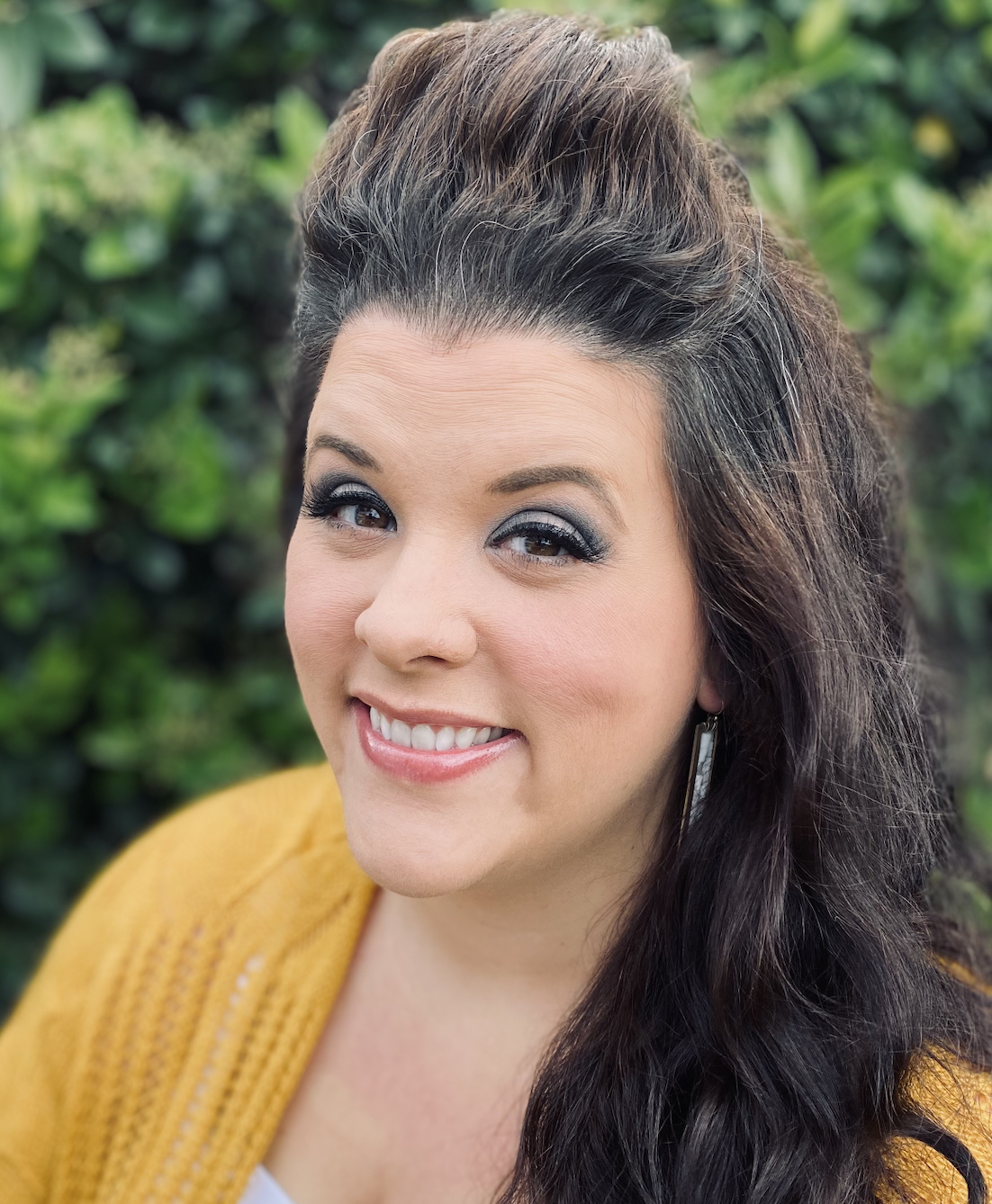

Digital StoryTelling Playground Bits & Bytes: Powerful Mini Activities to Engage Students |
Explore and create : Playground
Danielle Abernethy Julie Jaeger Gwynn Moore Jessica Pack Georgia Terlaje Dr. Mary Townsend
Learn by Doing as you interact with these Powerful Mini Cross Curricular StoryTelling activities you can integrate the next day! Multiple Formats and Tools will be used to demonstrate StoryTelling done Digitally. Learn how to help your students find stories everywhere! Participants receive Lesson Guides and Resources for each activity.
| Audience: | Professional developers, Teachers, Curriculum/district specialists |
| Skill level: | Beginner |
| Attendee devices: | Devices useful |
| Attendee device specification: | Smartphone: Windows, Android, iOS Laptop: Chromebook, Mac, PC Tablet: iOS, Windows, Android |
| Participant accounts, software and other materials: | NA at this time |
| Topic: | Storytelling/multimedia |
| Grade level: | PK-12 |
| ISTE Standards: | For Educators: Facilitator
Creative Communicator
|
| Additional detail: | ISTE author presentation |
| Influencer Disclosure: | This session includes a presenter that indicated a “material connection” to a brand that includes a personal, family or employment relationship, or a financial relationship. See individual speaker menu for disclosure information. |
StoryTelling Process will be at the foundation of all that is done at the Playground. Participants will:
• Learn by Doing as they actively participate and engage in Powerful Interactive Mini Cross Curricular StoryTelling activities.
• Recognize how digital storytelling is format and tool agnostic, making the process of telling stories the focus
• Recognize how the option to create final digital storytelling products in multiple digital formats makes it doable and manageable.
• Understand how these easily implemented activities make digital storytelling an equitable process able to be completed anywhere, anytime, and on any device.
• Learn how to facilitate students' discovery of story everywhere!
• Understand the process of storytelling done digitally and the creative elements used make the process rigorous.
• Receive lesson guides and resources for each activity.
• Receive access to "Getting Started with Digital StoryTelling" PD Videos and Resources
Room 1: It’s All About the Point of View in StoryTelling
1:00-1:20. Research First Hand
Presenter: Gwynn Moore
Description: Engage your students in scavenger hunts to guide them to find primary sources to support storytelling and content-based projects using the Library of Congress. Attendees will leave with scavenger hunt ideas to engage your students while learning about Primary and Secondary sources.Learn ways to engage students as you go through a mini-scavenger hunt: searching, analyzing, and appropriately citing LOC primary sources.
1:25-1:45. Story in Box: StoryTelling thru Pictures
Presenter: Gwynn Moore
Description: Using images as Thought Prompts engages students in developing a perspective to drive thoughtful and meaningful discussions that can then be transformed into narratives expressing a point of view. Participants will use templates provided for this engaging Thought Prompt-Story in a Box as they use a selection of numerous images to create the story the pictures tell. An easily implemented cross curricular next day application.
1:50-2:10. Circle of Knowledge: StoryTelling thru Pictures
Presenter: Gwynn Moore
Description: Using images as Thought Prompts engages students in developing a perspective to drive thoughtful and meaningful discussions that can then be transformed into narratives expressing a point of view. Participants will use templates provided for this engaging Thought Prompt-Circle of ViewPoints as they share how cultural experiences would cause varied reactions to one image, looking at the image from numerous points of view. An easily implemented cross curricular next day application.
Room 2: Lights Camera Action: StoryTelling with Video
1:00-1:20. What’s Your Angle? Building Visual Literacy for Better Movie Projects
Presenters: Georgia Terlaje and Jessica Pack
Description: Learn how to elevate your students’ movie projects through the purposeful instruction of visual literacy skills. Join us for some rapid fire fun as we master a few basic film angles, then create 15 second stories to showcase our understanding! Help your students become more effective storytellers!
1:25-1:45 Words Have Power: Storytelling to Lift Marginalized Voices
Presenters: Georgia Terlaje and Jessica Pack
Description: Create a culturally relevant and inclusive classroom by helping students tell stories about the incredible contributions of diverse individuals. Stories meant to amplify marginalized voices in history are the most important stories our students can tell! Experience the “In My Time” Project, and see how it can be applied in any grade level or content area.
1:50- 2:10. Assessment Doesn’t Have to be a Bore! Showcase Learning Using Moviemaking
Presenters: Georgia Terlaje and Jessica Pack
Description: Formative and summative assessments do not have to be boring! Engage and delight your students as they showcase their learning through moviemaking using poetry templates. In the market for ideas you can use immediately? This is the session for you!
Room 3: Bring Learning to Life: Integrate First Person StoryTelling in all Curriculum
1:00-1:20. Topic and Research Comes to Life with NonFiction Narratives
Presenter: Julie Jaeger
Description: No matter what the curricular area, telling the story from the point of view of the item, concept, topic, artifact, historical period or figure being studied brings student learning to life. Participants will go through the process and share what they know in a mini version of the NonFiction Narrative.
1:25-1:45 I am Poem
Presenter: Mary Townsend
Description: Looking for innovative ways to incorporate abstract and higher order thinking in your curriculum? The I AM poem can be used to examine a concept, topic, artifact, historical period or figure, or fictional character in any curricular area from elementary to high school. Attendees will create an exemplar they can use in their curricular area to teach students how to create the I AM poem.
1:50-2:10. 6 Word Biography
Presenter: Mary Townsend
Description: Looking for innovative ways to incorporate abstract and higher order thinking in your curriculum? The Six Word Biography can be used to examine a concept, topic, artifact, historical period or figure, or fictional character in any curricular area from elementary to high school. Attendees will create an exemplar they can use in their curricular area to teach students how to create the Six Word Biography.
Room 4: Get Creative with Comics and Animations for StoryTelling
1:00-1:20 Comics: The Drawing Board
Presenter: Danielle Abernethy
Description: Gather your ideas and start planning your who, what, where and when for your comics using a Character Scrapbook. In this 20 minute session we'll review setting and character, use draw tools to create our characters and map out details we will need for our future comic. Participants will walk away with a Character Scrapbook and suggested resources
1:25-1:45. Comics: Action!
Presenter: Danielle Abernethy
Description: Learn how to set up the physical layout of the Comic for digital or print purposes. Together we'll create a 1-3 panel comic focusing on how to maximize minimal text, speech bubbles, imagery and use of color can help with telling the story.
1:50-2:10. Animations - Put Action Into Story!
Presenter: Julie Jaeger
Description: Exercise your Creative Side with path, shape, and slide animations - using any slide show format. Animations help clarify a topic or add a bit of whimsy to a project. Participants will create basic animations and learn how to export them for use in projects. Activities to use with students tomorrow!
Bernajean Porter: The Art of Digital StoryTelling www.digitales.us "Digital Storytelling Across the Curriculum | Creative Educator." 2008. 27 Sep. 2015
Ohler, Jason B. Digital storytelling in the classroom: New media pathways to literacy, learning, and creativity. Corwin Press, 2013, Sessoms, Diallo. “Stories keep memories alive. Your life stories as well as your family’s stories about he most memorable life experiences are worth preserving.”
Paige Baggett: Top three levels of Benjamin Blooms Taxonomy revised (Anderson, Krathwohl 2001) look at elevated thinking as analyzing, evaluating and creating which are essential parts of the decision making StoryBoard Phase of the Digital StoryTelling process. Use of verbs instead of nouns puts Blooms into action which is exactly what the Storyboard is...the action and planning behind the product.
Anderson/Krathwohl The Second Principal http://thesecondprinciple.com/teaching-essentials/beyond-bloom-cognitive-taxonomy-revised/ Krathwohl A Revision of Blooms http://www.unco.edu/cetl/sir/stating_outcome/documents/krathwohl.pdf
Harvard Business Review looks at StoryTelling as an integral connection compared to a multi media ppt presentation without story at its core and suggest that “character-driven stories with emotional content result in a better understanding of the key points a speaker wishes to make and enable better recall of these points weeks later. In terms of making impact, this blows the standard PowerPoint presentation to bits. .
(Zak, Why Your Brain Loves a Good Story 2014) Digital StoryTelling requires intention and meaning making. Understanding the essence of story and its ability to make meaning happen for all is at the heart of Digital StoryTelling. The media is not what is important...the story is!! “If you can harness imagination and the principles of a well-told story, then you get people rising to their feet amid thunderous applause instead of yawning and ignoring you.” (Harvard Business Review, Storytelling That Moves People, Fryer, 2003)
ASCD: Understanding How Young Children Learn Children Learn Through Story) Children understand the concept of story for the purpose of learning. Merilee Sprenger: How to Teach so Students Remember, brain research shows us that learning needs connections...memories..something to stick to. Stories create memories and connections that influence memory. ....understanding of the brain structures that influence memory, and learn how teachers can promote better recall for daily classroom learning, high-stakes tests, and beyond.

Danielle's passion for educational technology began in 1997 when all she had access to was a computer in a closet of the media center with Internet. As a former technology coach, DEN STAR, DEN Leader and member of other educational organizations, she has learned the power of networking. Danielle collaborates with Heather on various classroom activities throughout the year. She has presented at FETC, SCEDTech, GAETC, and ISTE. Danielle is also an executive member of the Digital Storytelling Network of ISTE.



Gwynn Moore, Chair of the Digital StoryTelling Network and 2020 Digital Storytelling Creativity Storytelling Award Winner, is the Instructional Media/Technology Teacher at Aurora Frontier P-8 in Aurora Colorado and an educator for 28 years. In 2019 she became an ISTE Certified educator. She has presented at ISTE: 2010-2020. CO InnEdCo conferences: 2010-2019. Recognitions: ISTE Certified Educator, Microsoft Innovative Educator, Microsoft Certified Teacher, Google Level 1 & 2 Certified Teacher, Certified Google Teacher Leader, IBM AI Certified Educator, Adobe Certified Educator, EdPuzzle Certified Educator, FlipGrid Ceterfied Educator, Tech4 Learning Innovative Educator, and a Discovery Star Educator.

As a middle school teacher for 16 years and a California Teacher of the Year (2014), Jessica has continually worked to redefine what learning looks like in her classroom. An ISTE author, Jessica's book, Moviemaking in the Classroom, will be released in August 2021. She is an advocate for student choice and voice, as demonstrated by the original content her students regularly publish for a global audience. She also spent over a decade as a professional development instructor and Consulting Teacher for a digital storytelling non-profit organization called DIGICOM Learning, aimed at promoting moviemaking in southern California classrooms.

Georgia Terlaje has taught for 31 years and is currently and instructional coach for Palm Springs Unified. She has used digital storytelling as an instructional strategy for 11 years and has presented on the topic at both regional and national conferences. She was also instrumental in creating PSUSD’s first elementary film festival that is now in it’s 4th year. Georgia is also a teacher-consultant for DIGICOM Learning. In this role, she is a lead instructor for professional development courses for teachers in the area of digital storytelling. Georgia has a digital storytelling podcast, “Storytelling Saves the World”.


I am a high school social studies teacher and digital peer coach from Minnesota. I have a doctorate in educational leadership with a specialization in educational technology.